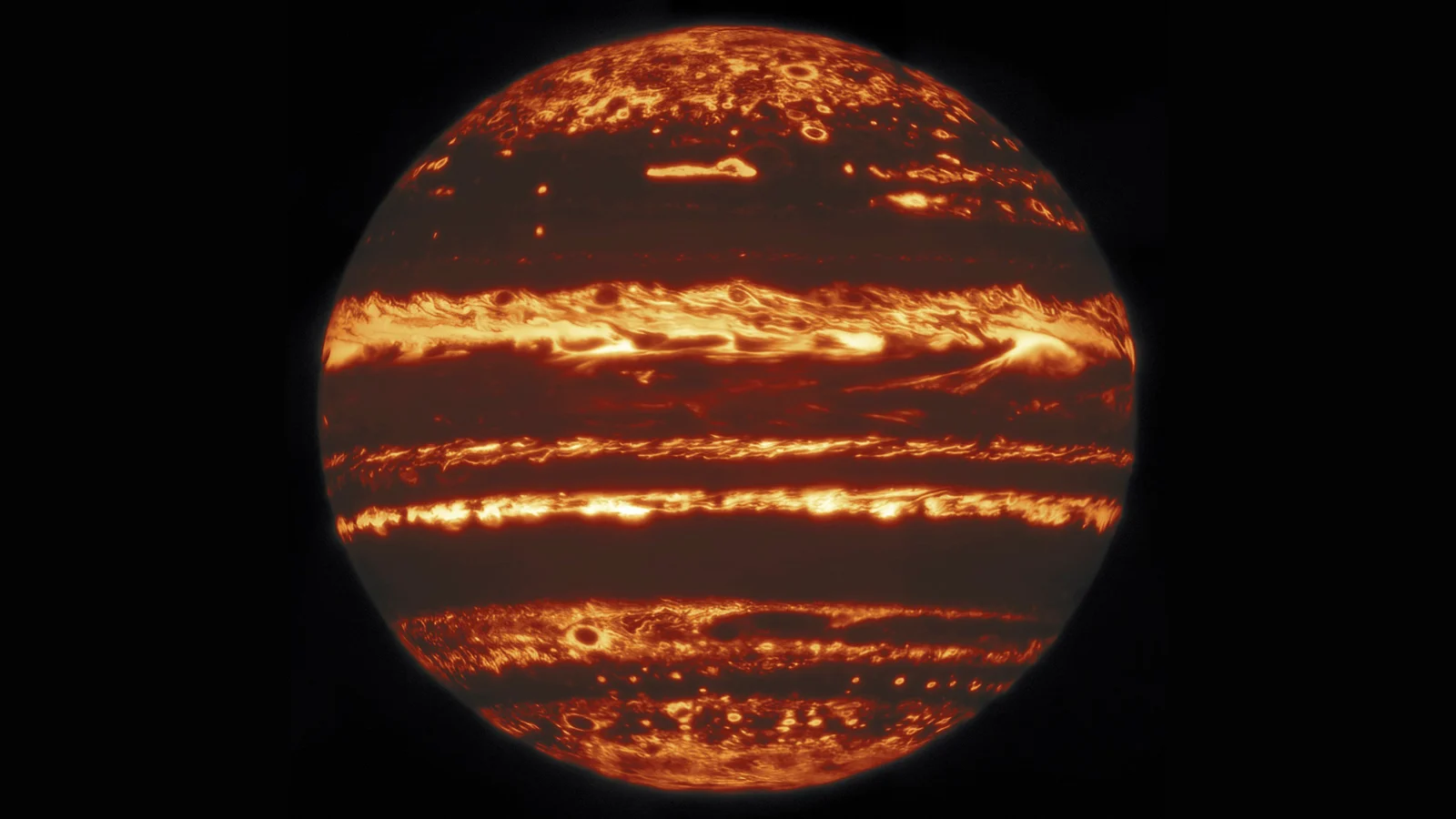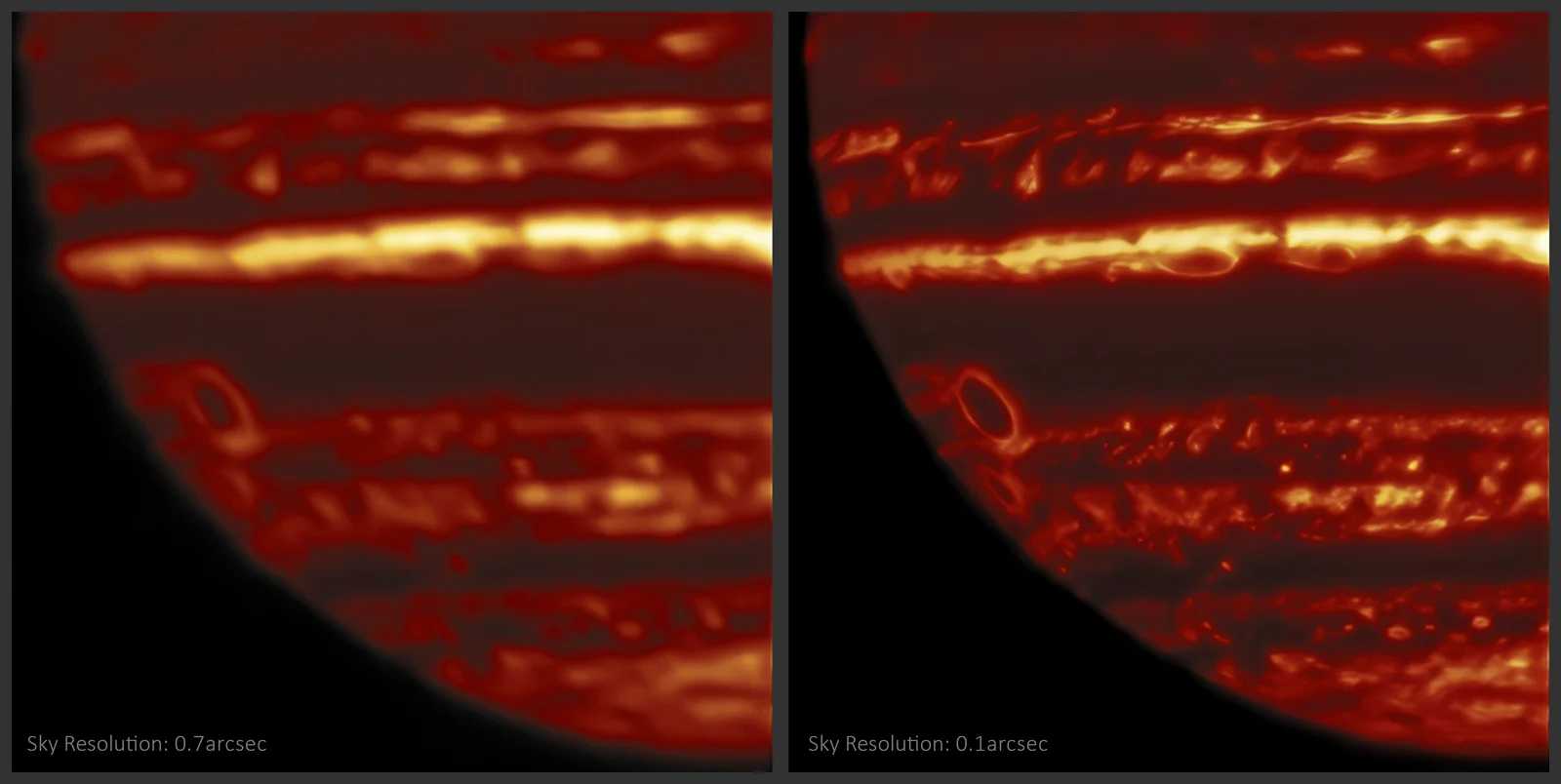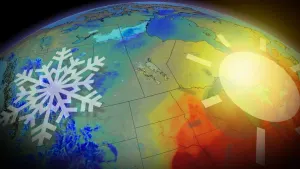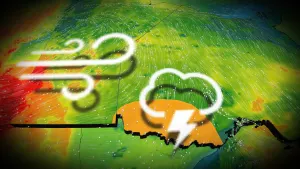
Latest 'lucky' look at Jupiter solves a Great Red Spot mystery
The Gemini Observatory has scored the most incredible 'lucky' images of Jupiter
Taking observations from Earth, a team-up of telescopes and spacecraft have solved a persistent mystery about Jupiter's Great Red Spot.
From its vantage point, high atop Mauna Kea in Hawaii, the International Gemini Observatory is capable of capturing some of the most amazing images of outer space. Partly, this is due to 'adaptive optics'. Using a laser 'guide star' to detect how turbulent the air is between the telescope and its target, the telescope's light-gathering mirror automatically changes shape to compensate for that turbulence. Thus, the telescope gathers the crispest images possible.
A certain amount of luck is still needed, though. During concentrated observations, astronomers use what they call 'lucky imaging' to get the best views they can.
Now, this 'lucky imaging' technique has produced one of the most amazing images of Jupiter ever captured.

Nine separate images from the Gemini Observatory, taken on May 29, 2019, were pieced together to produce this infrared mosaic of Jupiter. Credits: International Gemini Observatory/NOIRLab/NSF/AURA M.H. Wong (UC Berkeley) and team Acknowledgments: Mahdi Zamani.
The image above is what Jupiter looks like if you could see heat. The dark parts of the image represent the planet's cooler cloud tops. The bright orange parts are gaps in those clouds, revealing the hotter interior of Jupiter below the clouds.
"It's kind of like a jack-o-lantern," Michael Wong, lead researcher of this study from the University of California, Berkeley, told NASA. "You see bright infrared light coming from cloud-free areas, but where there are clouds, it's really dark in the infrared."
The truly remarkable part is the incredible resolution captured here. By using the best of what was gathered through 'lucky imaging', this full view of Jupiter resolves details down to a 500-kilometre resolution.

Two observations from Gemini Observatory on April 8, 2019. An 'unlucky' example is on the left, when air turbulence was higher, with a 'lucky' image for comparison on the right. Credit: International Gemini Observatory/NOIRLab/NSF/AURA, M.H. Wong (UC Berkeley) and team Acknowledgments: Mahdi Zamani.
According to Andrew Stephens, the astronomer who led the Gemini observations, "At this resolution, the telescope could resolve the two headlights of a car in Miami, seen from New York City."
SOLVING A DEEP MYSTERY
Working with the Hubble Space Telescope and NASA's Juno spacecraft, these images of Jupiter from the Gemini Observatory have helped to solve a persistent mystery.
For years, astronomers have tried to determine, with certainty, the nature of the dark-coloured bands in Jupiter's clouds. Which were simply dark-coloured clouds, which were due to gaps in the cloud tops, and how could one differentiate between the two?
To solve this, each time the Juno spacecraft makes a low pass over Jupiter's cloud-tops - a 'perijove' - astronomers point Hubble and Gemini at the planet.
Hubble captures imagery in visible wavelengths, as well as near-ultraviolet and near-infrared. Gemini focused purely on the infrared.

Observations of the Great Red Spot from the Hubble Space Telescope, in different wavelengths of light, are compared to and combined with similar observations from the Gemini Observatory. Credit: Credit: NASA, ESA, and M.H. Wong (UC Berkeley) and team.
Through this team-up, astronomers were able to make direct comparisons and combine the imagery together, to show that the dark bands and patches Hubble saw in the Great Red Spot lined up perfectly with the gaps Gemini spotted in the clouds.
"Similar features have been seen in the Great Red Spot before, but visible-light observation couldn't distinguish between darker cloud material, and thinner cloud cover over Jupiter's warm interior, so their nature remained a mystery," Glenn Orton, a senior research scientist at NASA's Jet Propulsion Laboratory, said in a Gemini Observatory press release.
JOVIAN WEATHER FORECASTS?
According to NASA, this combination is becoming a powerful team for studying weather phenomena on Jupiter.

This illustration of lightning, convective towers (thunderheads), deep water clouds, and clearings in Jupiter's atmosphere is based on data collected by the Juno spacecraft, the Hubble Space Telescope, and the Gemini Observatory. Credits: NASA, ESA, M.H. Wong (UC Berkeley), and A. James and M.W. Carruthers (STScI)
With Juno flying over the cloud tops, and Hubble and Gemini observing the entire planet from afar, they liken it to the combination used by weather forecasters here at home. Hubble and Gemini take the place of the geostationary weather satellites, such as GOES 16 and 17 that watch Earth's weather systems from afar. Meanwhile, Juno acts as the equivalent of NOAA's Hurricane Hunter aircraft, flying low over a Tropical Storm or Hurricane to take close-up measurements of the storm's strength.
"Because we now routinely have these high-resolution views from a couple of different observatories and wavelengths, we are learning so much more about Jupiter's weather," team-member Amy Simon, of NASA's Goddard Space Flight Center, explained in a NASA press release. "This is our equivalent of a weather satellite. We can finally start looking at weather cycles."
Sources: NASA | Gemini Observatory










